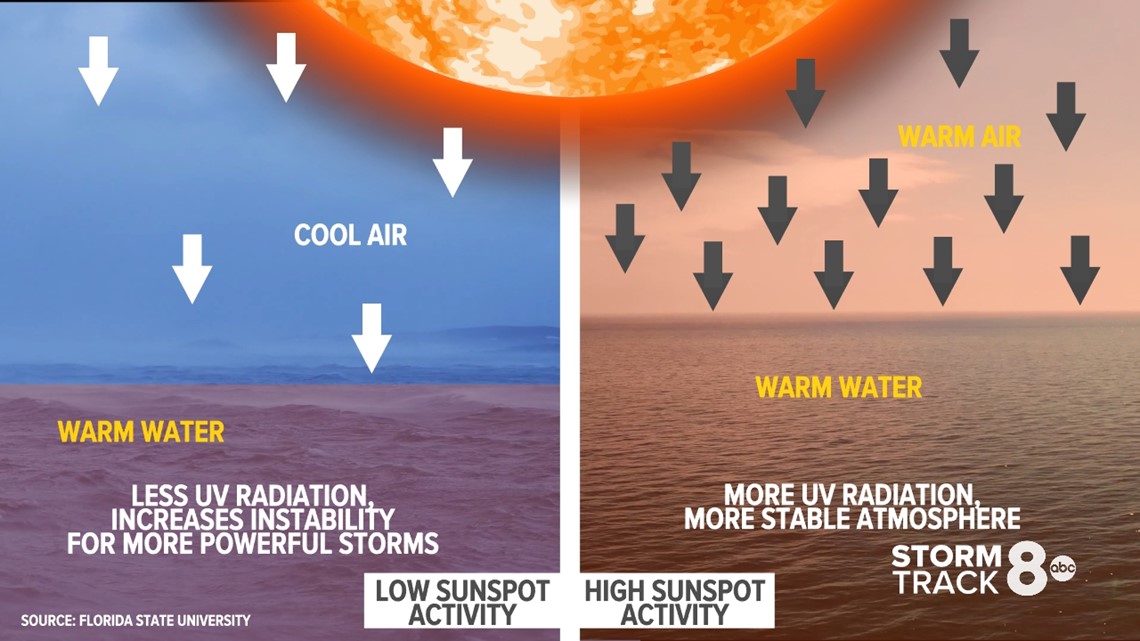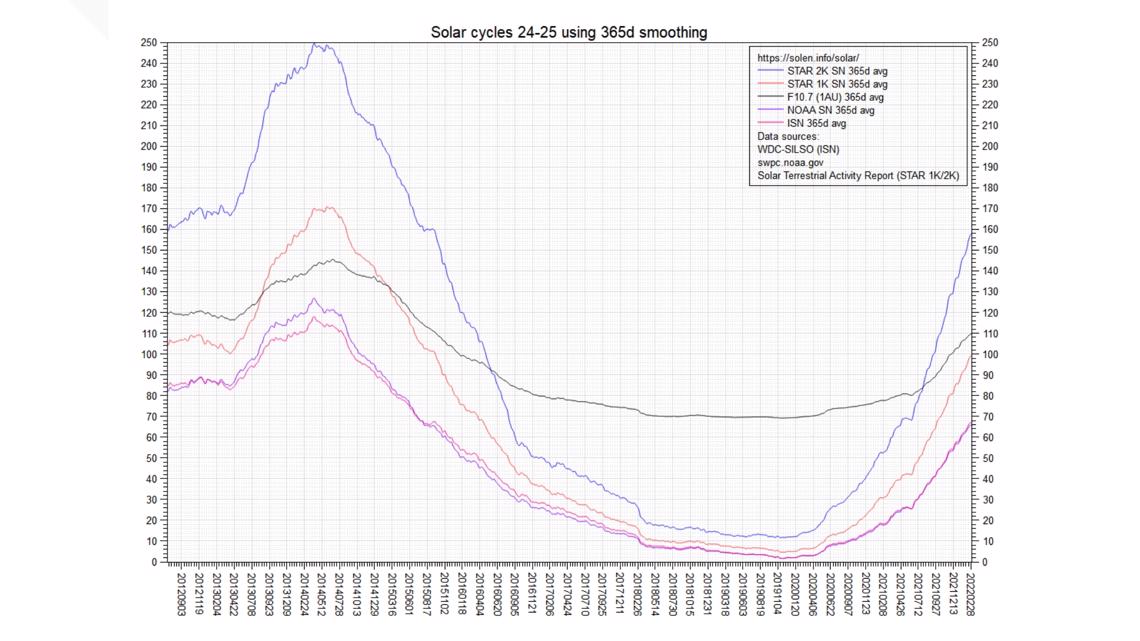TALLAHASSEE, Fla. — The 2022 hurricane season has been off to an unusually slow start. In fact, we've observed the third biggest gap between named storm systems since the weather satellite era going back to 1965. While we know a La Niña pattern is likely playing a big role in the calmer waters this summer, there may be another factor at play — sunspots!
Two researchers, Robert E. Hodges and James B. Elsner with Florida State University believe there is a connection between solar activity and hurricane frequency over the North Atlantic ocean.
In 2010, they theorized that the solar cycle that featured high sunspot activity caused increased warming within the ozone layer, making the atmosphere more stable and less supportive of hurricane development. Likewise, when the solar cycle and sunspots reached a minimum, the atmosphere became more unstable and more supportive of hurricanes.


Researchers believe that increased solar activity, especially sunspots, can warm the upper layer of Earth's atmosphere, creating more stable conditions and in turn decreasing hurricane activity.
In order for storms to form, a certain level of instability is required, and you can only create that instability if you have a sizeable difference in temperature going from the surface of the ocean water into the upper levels of the atmosphere, the same conditions required for thunderstorm development.
On the flip side, an unstable atmosphere is more likely to be found during a time of low solar activity with minimum sunspots. This means less ultraviolet radiation is being absorbed by the atmosphere, leading to cooler air above the warmer water below and thus creating more unstable conditions needed for storm development.


Solar activity is currently increasing at present time after reaching a low point back in 2020. The previous solar activity maximum was in 2014.
Latest observations currently indicate that the upper part of the atmosphere, known as the stratosphere, is currently warmer compared to the average across much of the northern Atlantic Ocean.
While sunspot activity may indeed play somewhat of a role in this quiet hurricane season so far, it is likely just one of many contributing factors that scientists continue to study and try to further understand.
Have a question you would like me to answer for a future "Ask Andrew" segment? Submit it, here!
Watch from NASA: Two weeks in the life of a sunspot

